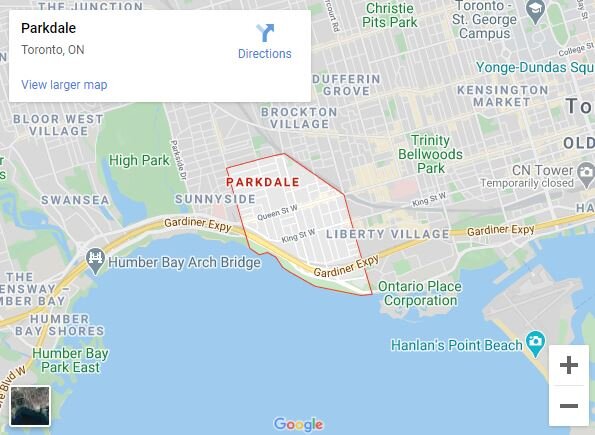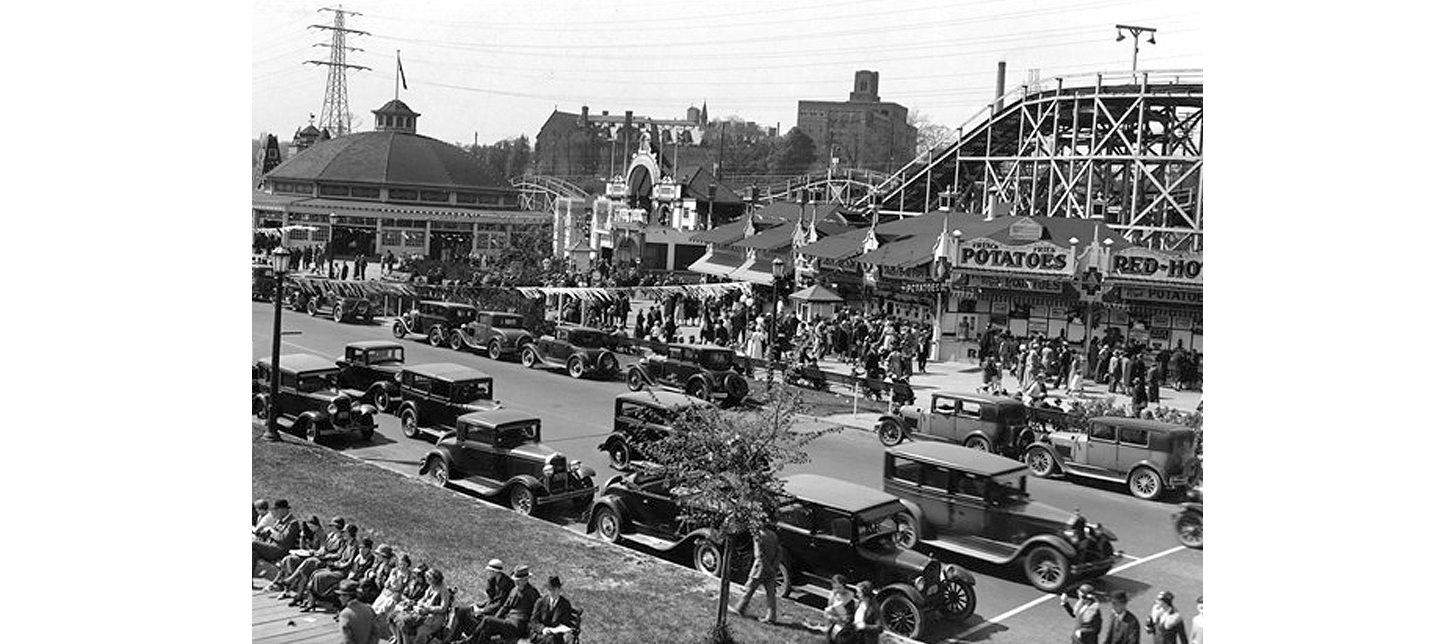
Parkdale is a diverse community home to Tibetan, North African and West Indian enclaves mixed in with some of Toronto's best vintage fashion, furniture and fabric stores.
The History of Parkdale
When The Village of Parkdale first became incorporated in 1879, it was land given to James Brock as payment, but he didn't do anything with it during his life. Over the years the land was slowly parsed out and given to various individuals to be occupied. When the population threshold was reached (783, when 750 was needed), Parkdale railway station opened at Queen and Dufferin in 1856.
Large mansions were built in the residential neighbourhood over the years. Toronto grew around the Village of Parkdale slowly but surely, and it was annexed by the larger city in 1889.
In the 1910s, the South Parkdale station was replaced with Sunnyside railway station as other lines were moving underground.
Early in its history, the main draw of Parkdale as a neighbourhood was its proximity to the lake and the CNE. Land was extended beyond the rail line to create a wider boardwalk area. Sunnyside Amusement Park was also a popular feature, built in 1922. More music and recreation venues sprung up to follow.
In 1955, the Gardiner Expressway began construction, which caused major changes in the neighbourhood. The Sunnyside Amusement Park was demolished, the lakeside space was diminished, and it became harder to reach the lakeside recreational area by foot. The local train stations closed in the 1970s and the beach became less of a popular waterfront destination.
After the Gardiner was completed, population density rose in the area, with some detached homes - especially those on streets leading onto the expressway - being replaced by apartment buildings.
Parkdale Today
Parkdale is a largely residential neighbourhood nestled between High Park and Liberty Village, known for its diverse population and fantastic cuisine. It has changed a lot over the years, from its original incorporation as the Village of Parkdale, annexation by the City of Toronto, and the introduction of the Gardiner Expressway.
Parkdale is physically bordered on the West by Roncesvalles Ave, on the North by CP rail line, the East by Dufferin St and the South by Lake Ontario.
Today Parkdale is a working class neighbourhood with a population spanning a variety of ethnicities and incomes. The area is often a starting point for new immigrants, with its relatively large rental population. Parkdale plays home to one of the largest settlements of Tibetans outside of India and Nepal. The area has also seen a large number of artists working in the more inexpensive rental units, aided by the opening of the Parkdale Arts and Cultural Centre and support by the community.
Prices have begun to rise in the area as of late, due to gentrification and rising prices in Toronto in general. An influx of restaurants in the 2010s was so dramatic that the city put in a temporary restriction on the number that could exist in the area. This has been lifted as of 2018, though backyard and rooftop patios are still limited.
The commercial district along Queen Street West and King Street West are awash with unique places to get a bite from every corner around the world. The multicultural nature of the neighbourhood really shines here, and a network of close-knit business owners keeps the area feeling friendly.
While the waterfront property the area used to be known for has been reduced thanks to the construction of the Gardiner Expressway, Parkdale still offers paths to get to the shores of Lake Ontario to take a stroll.
Parkdale is well served by transit, with streetcar lines along Queen and King Streets. Many bus lines run North/South in the area, and many of these routes connect to subway stations.
PARKDALE REAL ESTATE
Parkdale is primarily a residential area of the city, with semi-detached homes predominating on most side streets. Many of the homes date from the 19th Century and early 20th Century. Around 1900, the area was a well-to-do suburb and many older mansions from around 1900 still exist, often converted to multi-unit buildings. Many of the residential streets have mature trees. Good examples of Victorian housing can still be found on Cowan Avenue and Dunn Avenue, south of King Street. Victorian-era row homes of Georgian Revival style with original gaslights can also be seen on Melbourne Place.
There are a variety of housing styles from the staggered timeline of construction. Victorian architecture can be found on Cowan Avenue and Dunn Avenue. Homes in a Georgian Revival style with their original gaslights can also be seen on Melbourne Place. Many of these larger homes are subdivided into rental units ideal for entering the city.
Looking for the best of Parkdale?
Parks
Schools
Please click here for a comprehensive list of schools in Parkdale..
Restaurants
Chantecler: Cozy, exposed-brick setting with inventive French small plates & signature cocktails.
Le Phénix: Pop-up restaurant serving classic French plates & old world wines in an unpretentious setting.
Dandylion: Inventive dishes with global influences served in a minimally decorated room with bare brick walls.
Cafés
Capital Espresso: Coffee, pastries & sandwiches are served in an airy, relaxed corner space with exposed brick.
Bom Dia: A truly Portuguese experience. From traditional delicacies to imported tiles, plates, and marble, we care about bringing authentic taste and culture from Portugal to Toronto.
.Rustic Cosmo Café: A local breakfast/brunch café offering nice, quick service on Queen West.









